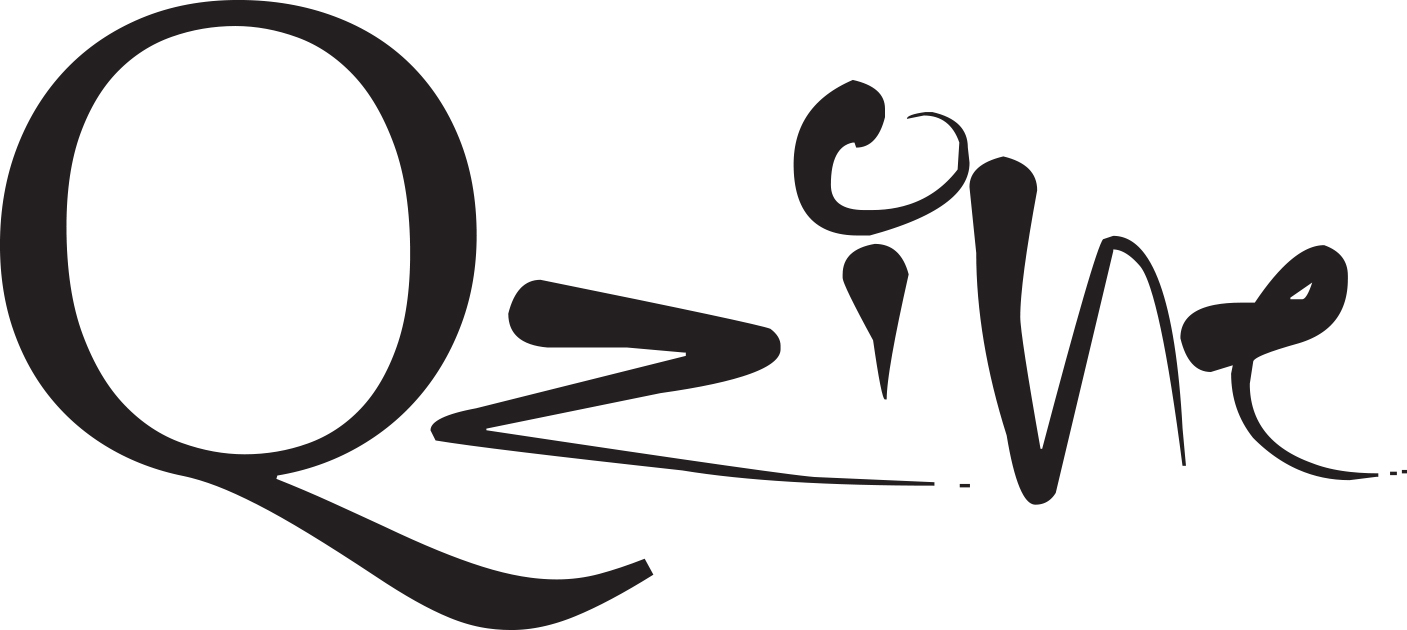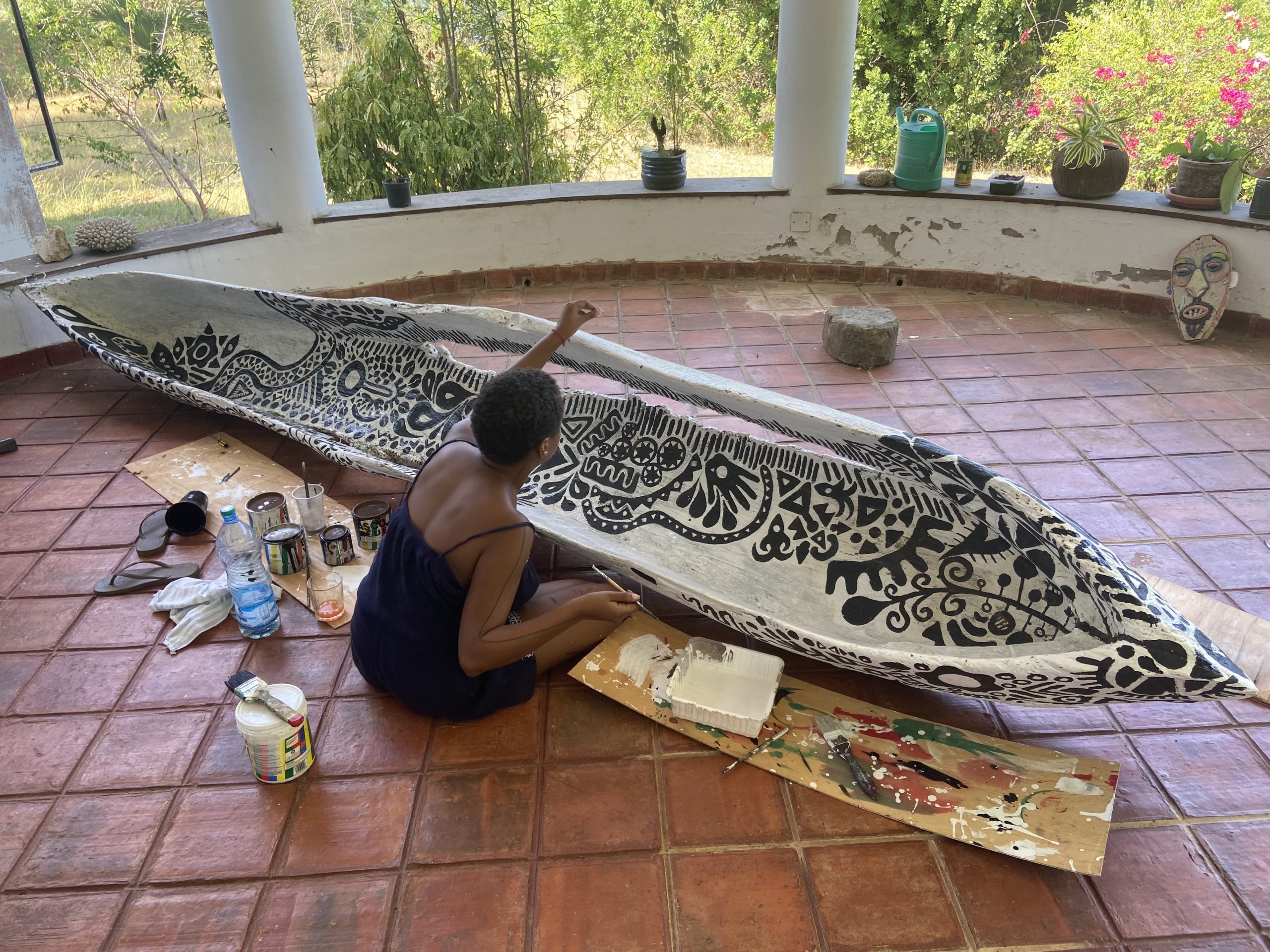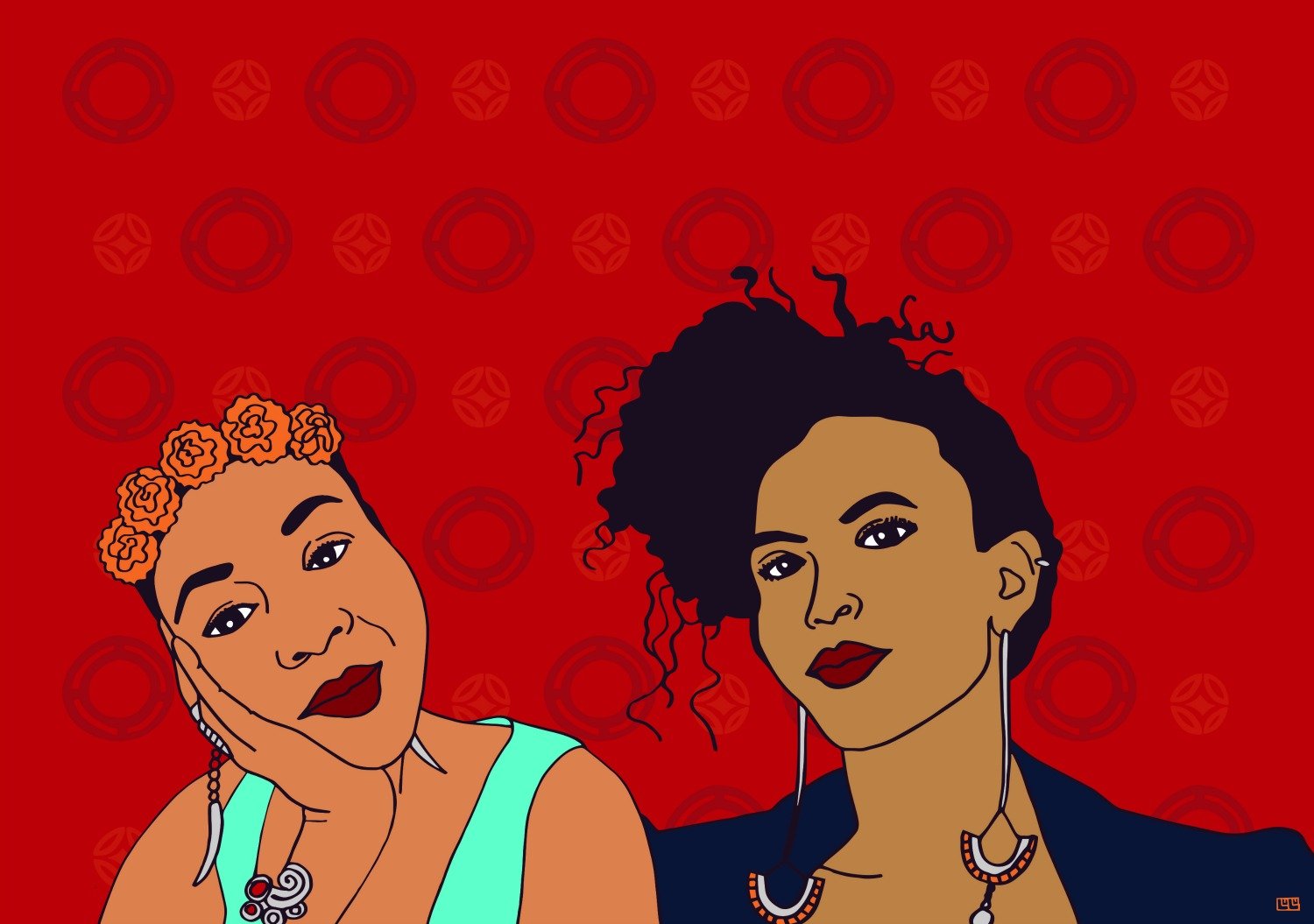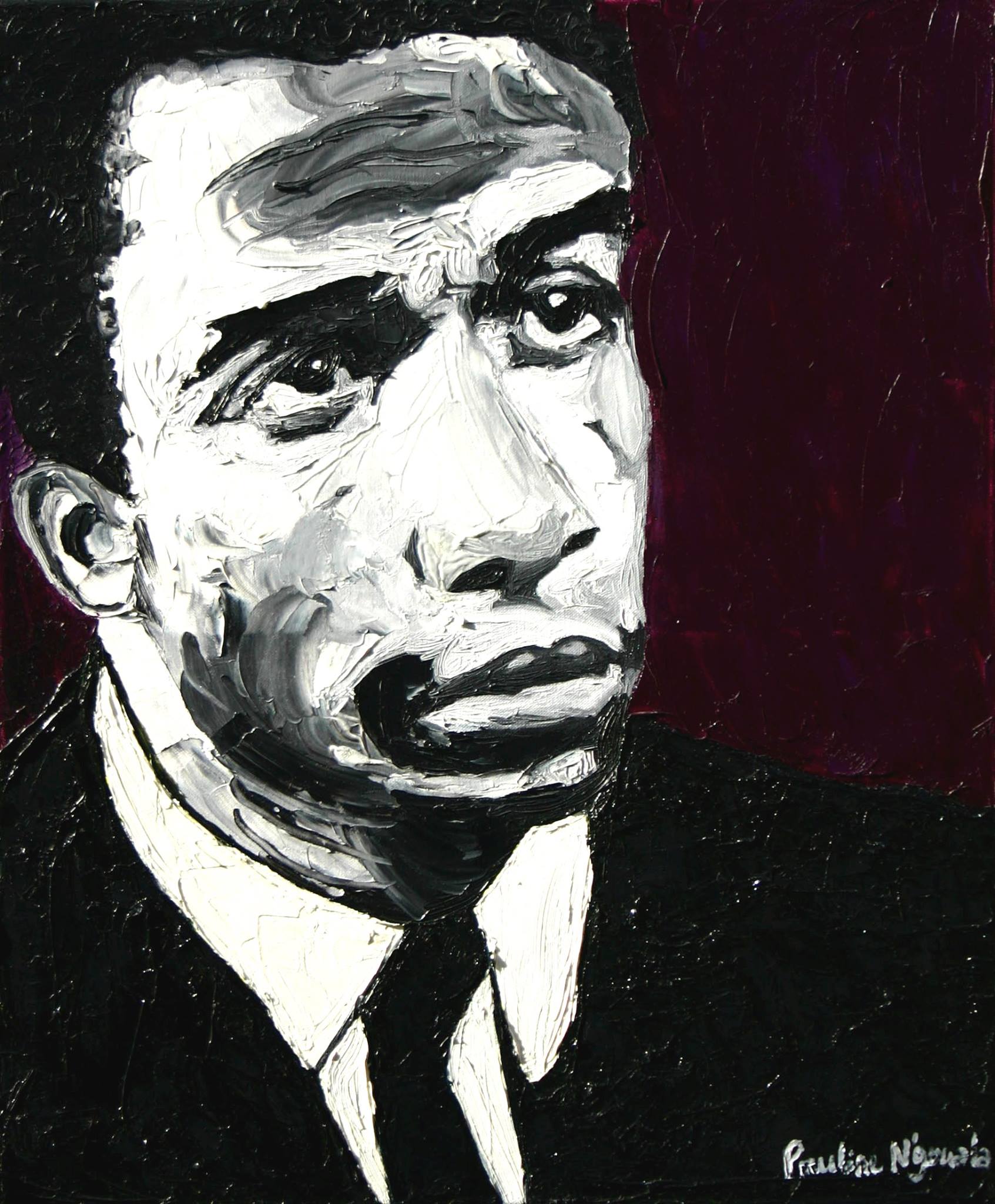Reflection of the Soul
Interview by Michael Kémiargola, photos by Delphine Alphonse, Michael Kémiargola, Pauline N’Gouala. English translation by Alice Vrinat
The Franco-Congolese painter Pauline N’Gouala creates unquiet canvasses that challenge the world. Famous peoples, icons or anonymous. Emblems of black culture. South African victims of lesbophobia like Busi and Buhle. Other artists like Nina Simone or Basquiat. Whether this is Frantz Fanon or Zanele Muholi, Pauline gives them the eternity of her particular oil painting, her hands and her gaze.
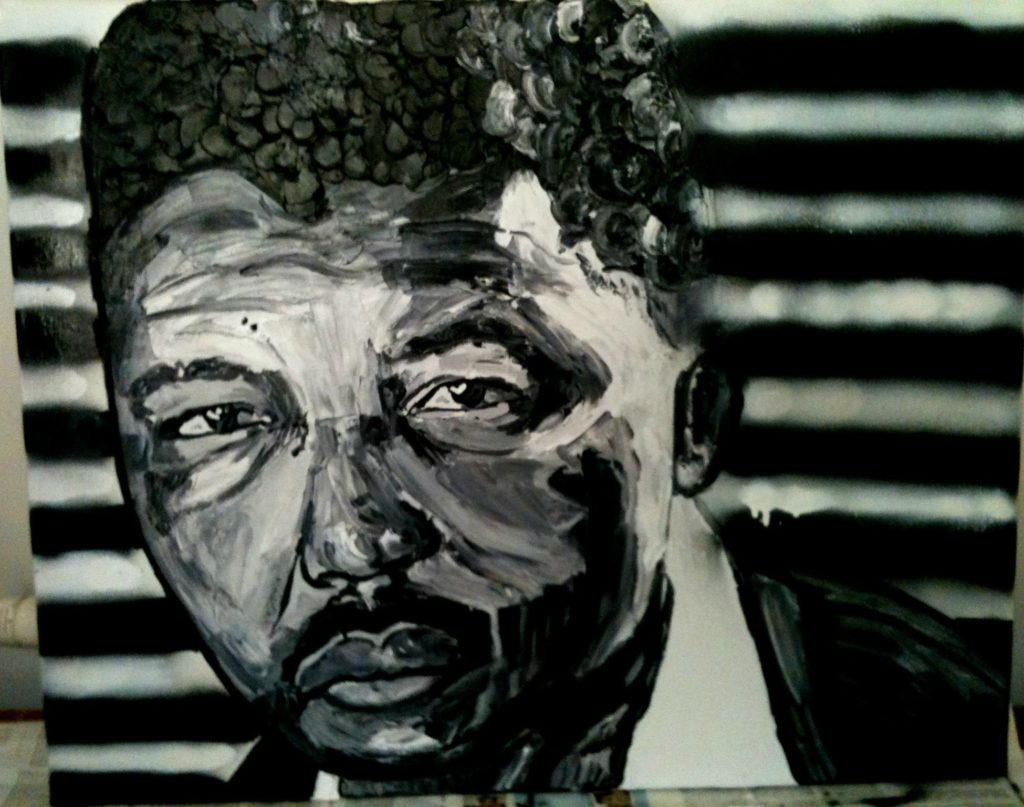
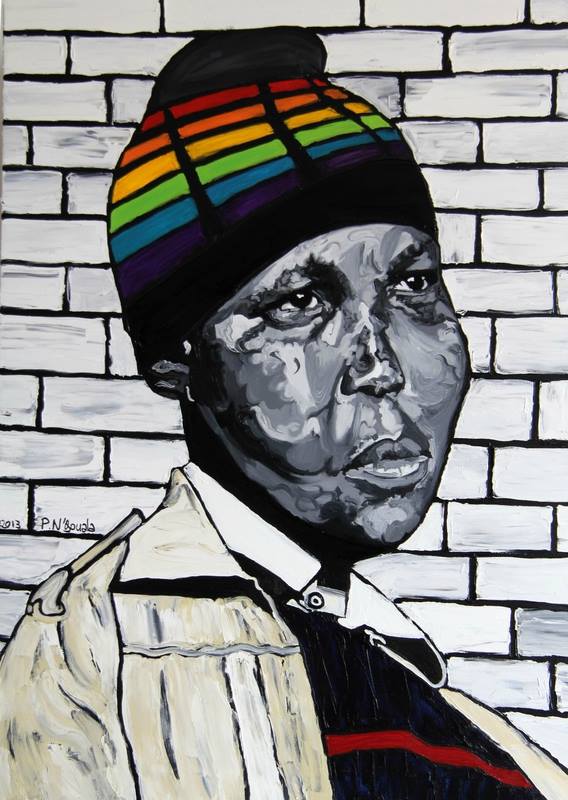
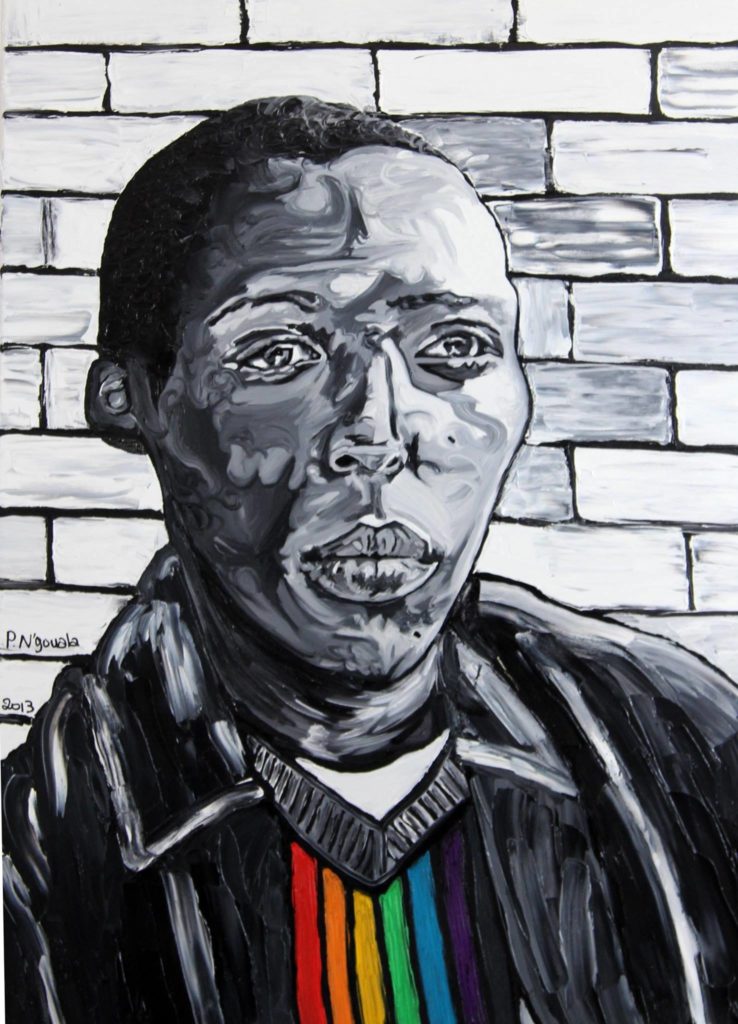
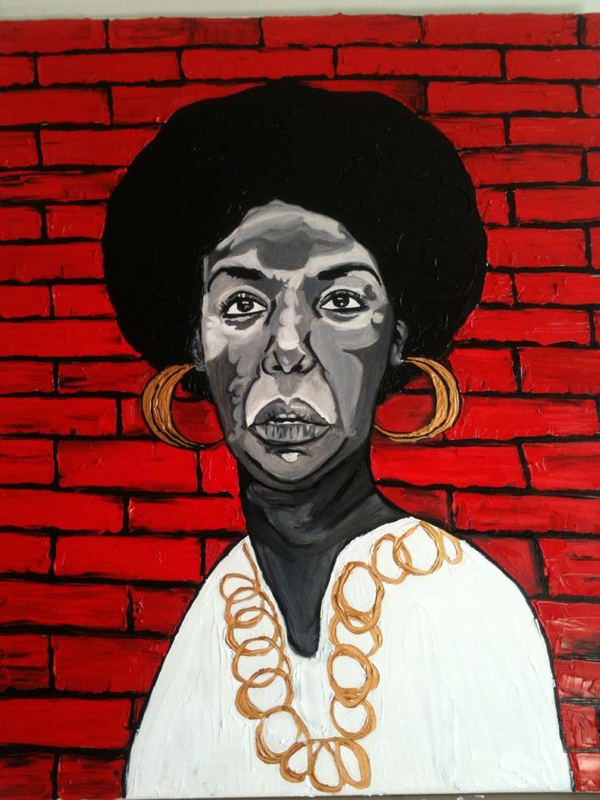
My name’s Pauline N’Gouala, I’m 29 and I am an oil painter on the side. I do portraits. I’m currently enrolled in a stained-glass art training.
I’ve been drawing since I was a child. I would copy the comics and cartoons characters, and I kept doing that until I was an adolescent. I started with Chinese ink and that’s how I learned how to paint. One day, I made a portrait of my ex in Chinese ink and she told me “you should paint.” And now, it’s been 5 years since I’ve been doing oil paintings. I mainly do portraits.
I started locally in my city Plaisir, in Yvelines, where the municipality allowed me to exhibit for few months in a concert hall. Later, I had an exhibition in Paris. Some time after that, I met Zanele Muholi at a conference, and she suggested that I do a portrait of her and some victims of lesbophobic crimes, which allowed me to combine my art with activism. Shortly thereafter, a special evening on South Africa was held at the Festival « Elles résistent » and through partnership with LOCs (Lesbiennes of Color), I exhibited this series of portraits at that event. Then there were other opportunities like Afropunk in Paris.
Michael Kémiargola : What are you trying to capture when you paint?
I always start with the eyes because I’m used to, and I also think they are the reflection of the soul. It is through portraits that I express my humanism in the sense that we are all the same and at the same time all different. In the eyes, each one will feel something different, that too I find interesting. I feel like I’m kind of doing a transfer and that I’m unloading some emotions in order to feel lighter. I start with the eyes and I don’t work on them that much; it happens by itself, that’s the mystic aspect of painting.
MKD: And when is it done?
Since I have a model it’s a bit easier to figure out more or less where I want to go. It’s never 100% identical but there’s a feeling that tells me I’m right where I ought to be. I don’t alter my paintings months later, it is quite instantaneous.
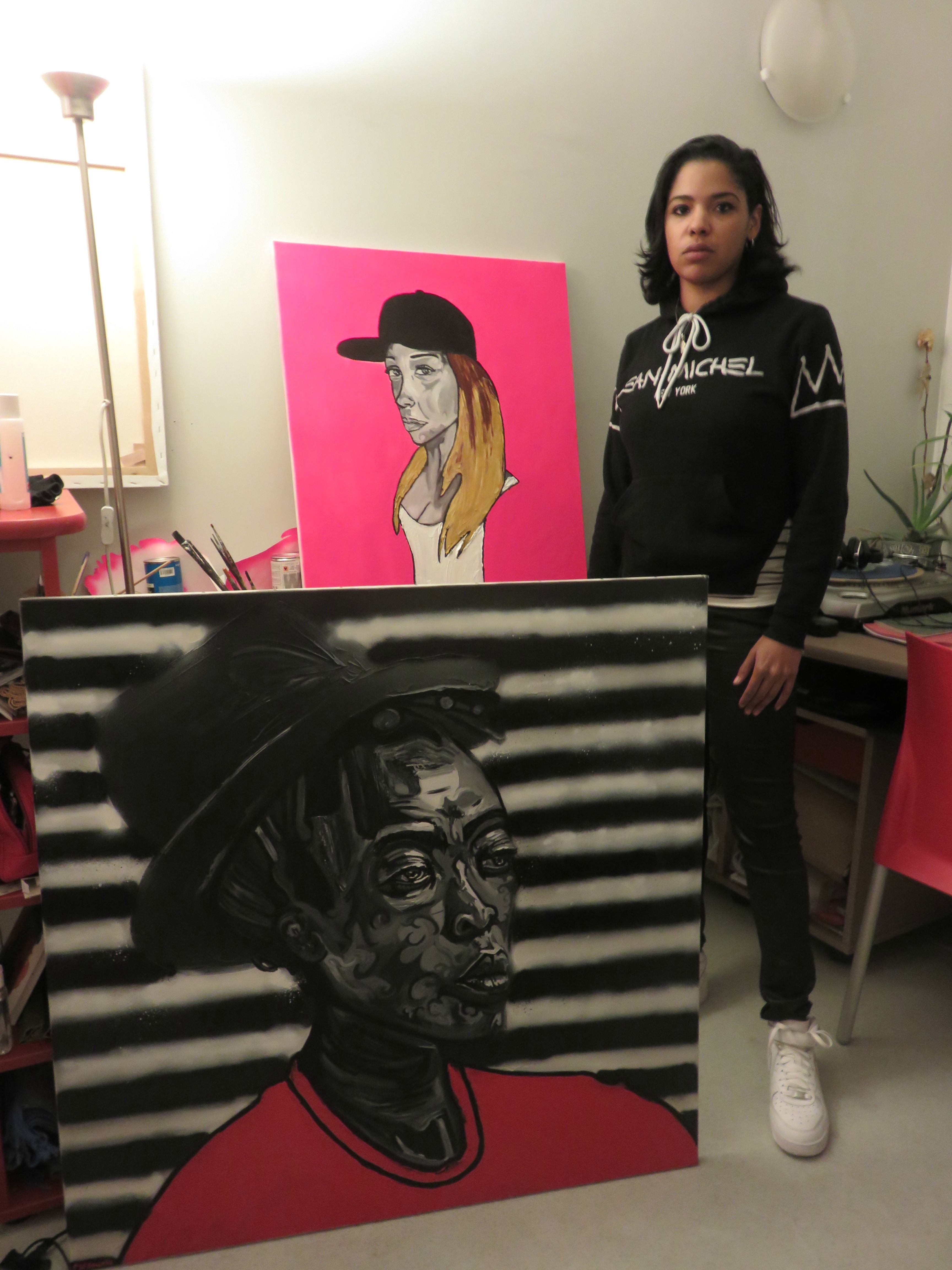
MK: When you’re painting do you have fun, do you experiment?
Painting is one of the things I prefer doing. When I paint, I don’t think about anything else. I’m in my bubble, my little world… Maybe in some way I take shelter there. But sure, I have fun. I experiment sometimes. I did two paintings where instead of the usual brick walls I put pink color: I wanted to do a set of LGBT artists so I did a painting of Keith Harring, and the photographer Estelle Prudent. Obviously it makes me happy. I don’t think about what’s going to be said about it. I just wonder “Am I happy with the results? Do I feel like what I did was good?” And I feel great about having a talent for something because I am not particularly qualified. I don’t have a job that gives me pleasure so at least I have painting.
MK: And you did the portrait of Frantz Fanon quite early, didn’t you?
Frantz Fanon was one my first paintings. I was very young when I discovered Afro-American and African leaders like Patrice Lumumba. Since I had a new mode of expression, which was oil painting, I wanted to capture them. And it was my first sale, I’m actually proud of it. I have not read all his work but I’ve been through psychiatric institutions so I understand what he did for the psychotic patients in Algeria. He freed them, and I am touched by his battle. It’s this dimension that moved me.
MK: Do you paint strangers and well-known people the same way?
I don’t necessarily need to know the people but I need to feel close to them anyway. For instance, I felt something really strong when I painted Jean-Michel Basquiat. I felt close to him. I think it doesn’t make a difference if I know the person, like an ex or a good friend. Or someone like Zanele. I am focused on the portrait, the color harmony.
However there is also a strong emotional connection when it’s about victims. First you realize it could have been me and then you realize it’s an endless struggle. As you are doing these paintings, Zanele keeps sending pictures because new victims are being added to the list. You then become aware of the extent of the scourge, and it scares you. And you think that if you can denounce this evil and show the extent of homophobia, then you’re using painting for a noble cause. And, you want to keep doing it – if it can raise awareness. Although we’re talking about homophobia in South Africa, but it’s still a reality in France.
It’s true that in general I get solicited from LGBT people or black communities, or both, but that’s no problem for me because they are part of my identity and I fully accept it. I don’t feel like I’m getting lost.
MK: Do you have artists in your family?
When I was young I saw the drawing of one of my uncles. I saw it at my grandmother’s place and he sketched it when he was young. I precisely remember thinking, if a child could do that, so could I. I was six years old, and that’s when it clicked: drawing and really focusing on it. I could be at once hyperactive and I could spend hours by myself working on a drawing without pissing anybody off. In my family noone is really an artist, but everyone supports me and comes to my exhibit when they can, they also buy materials for me because it’s expensive. It’s really nice of them. For my first exhibit in the Yvelines, there were so many people from my family in attendance and I was really touched. I felt that they were proud of me and that they supported me, which is awesome.
MK: Who are your influences?
I don’t have a huge artistic background. I am autodidact. I do like to go to an exhibition from time to time. My favorite painters are Monnet, Frida Kahlo, Modigliani (who I painted) and Basquiat, (he’s my chouchou). I’m also drawn to photography.
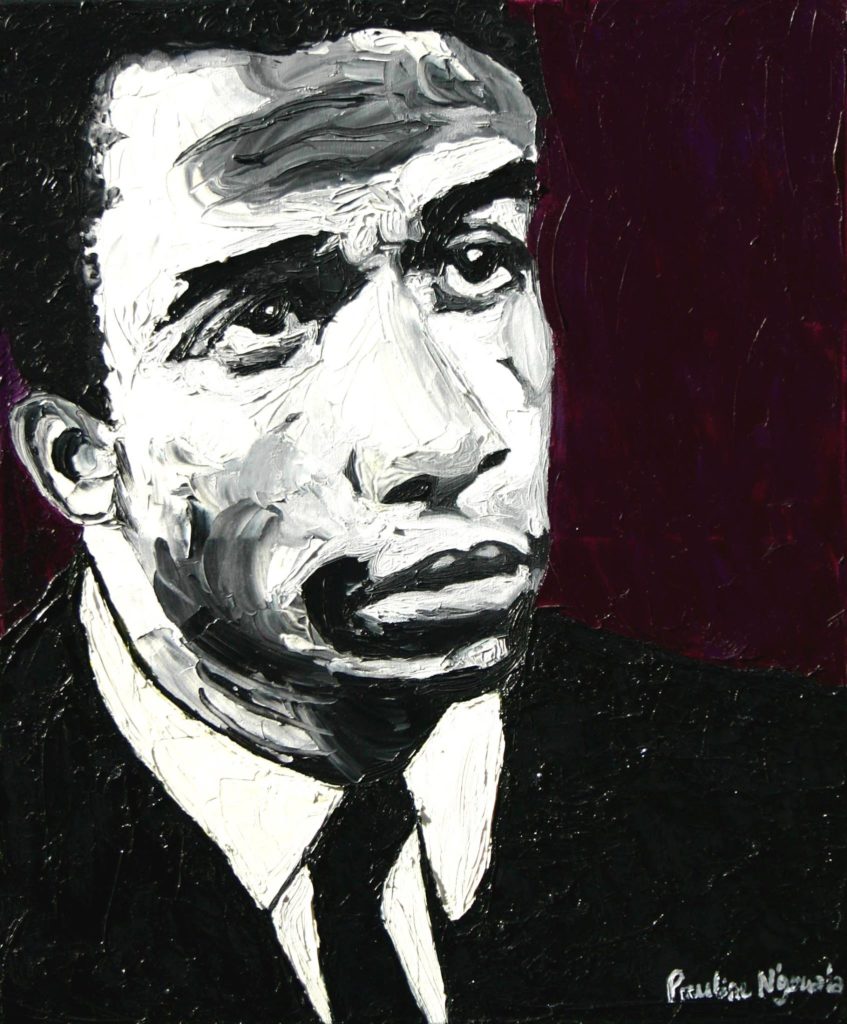
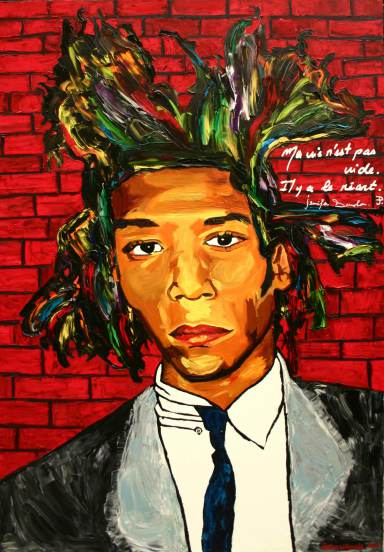
I’m a big fan of movies. I listen to lots of music and by the way, back then everything that was afro-centric, the famous black leaders – I actually knew them through reggae because no one talks about Frantz Fanon at school. I am also inspired artwork by my buddies, etc.
Street art is really important to me and I think it’s essential to urban life, which can be dull – my dream was actually at some point to paint a wall. In the beginning, I couldn’t think about anything else when I would see a wall, I would project a giant portrait on it.
MK: What can we wish you for the future?
I’d like to have the opportunity to have a studio. I’m going to keep on painting. In my mind, I even see portraits in stained glass and paintings on glass. For that, I would need a studio. Also, as I told you before, I sent my application for a festival in 2016. That’s the great part of painting, you never know what to expect and it’s always full of surprises.
Pauline N’Gouala’s favorite playlist when painting
Miles Davis “Flamenco Sketches \ So What”
Duke Ellington “Fleurette Africaine”
Ashanti feat Ja rule “Down 4 You”
Total feat Missy Elliot “What About Us”
Koffi Olomidé “Elle et Moi”
Gregory Isaacs “Hot Stepper”
The Organ “Brother”
The Police “Darkness”
